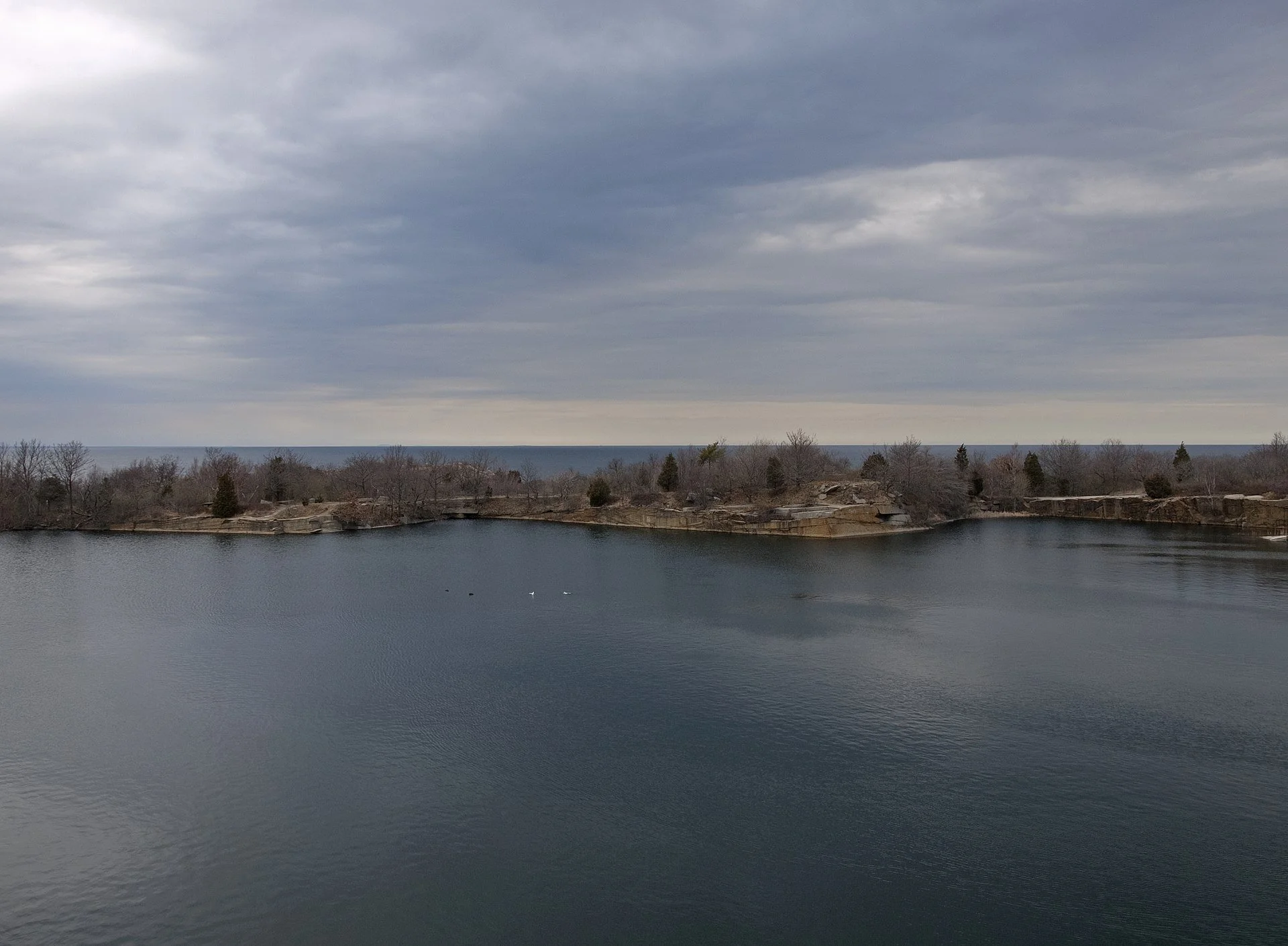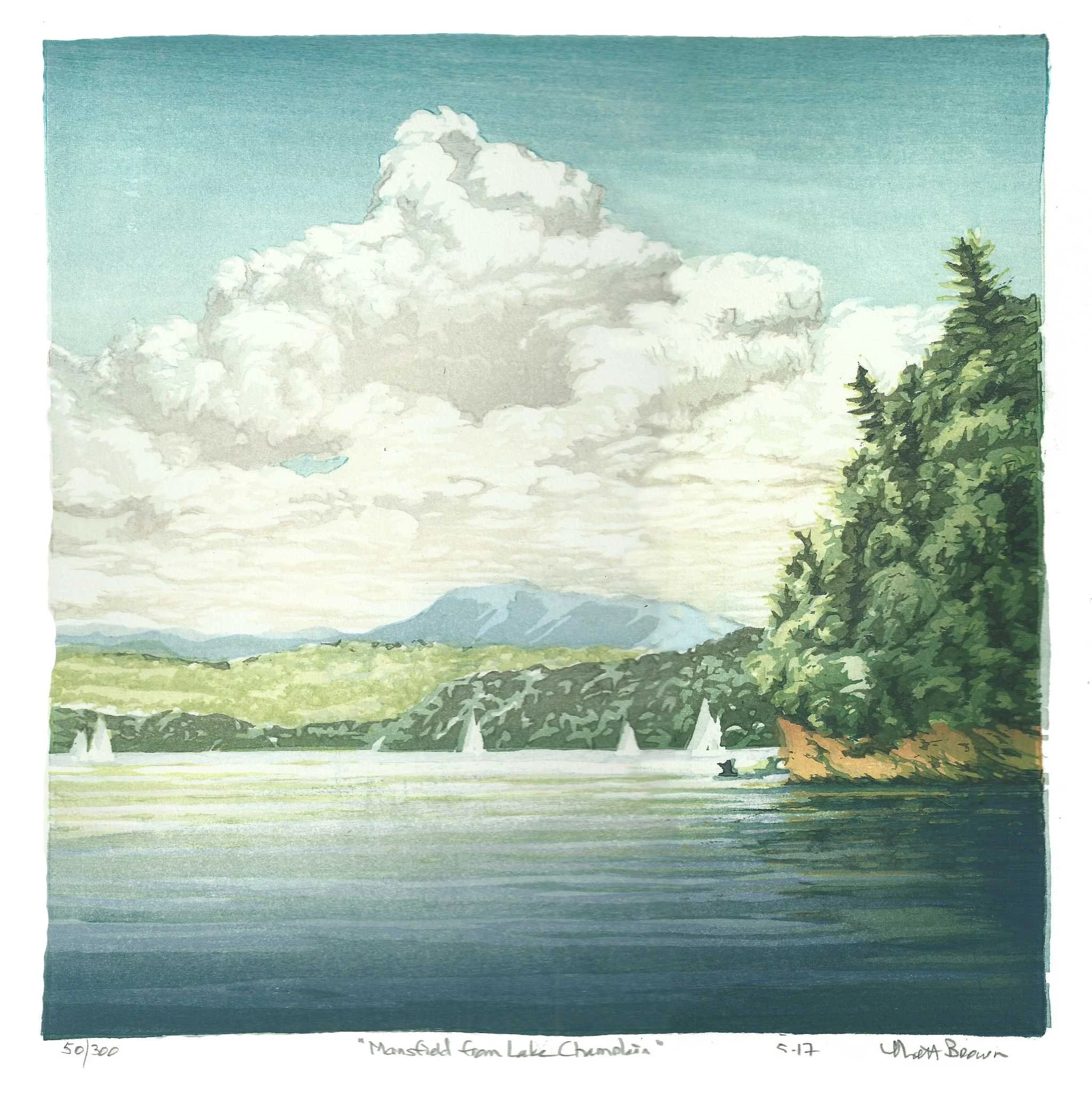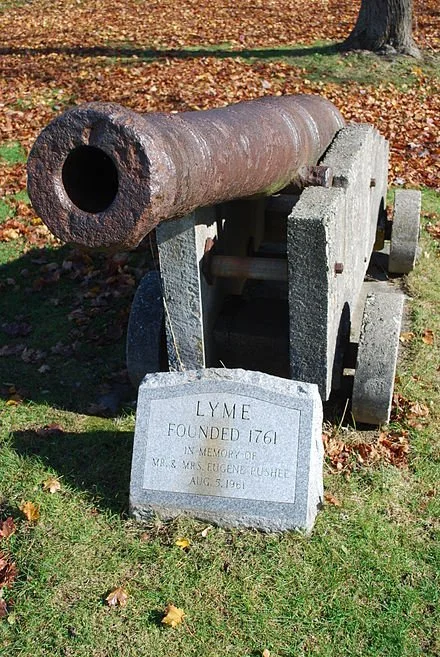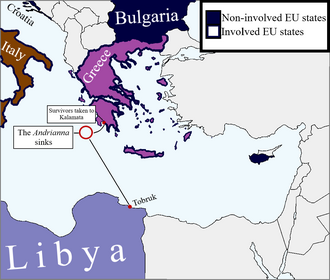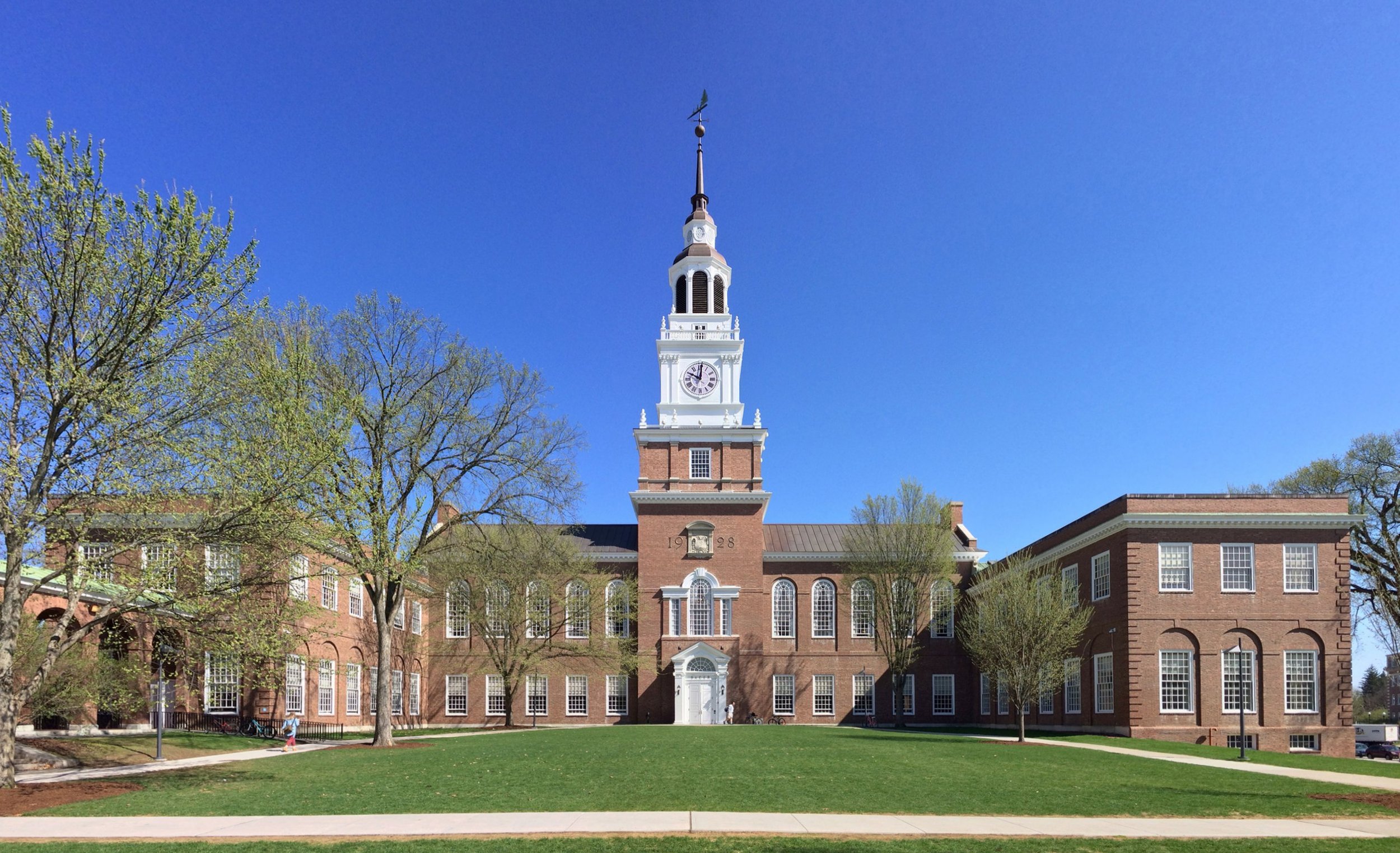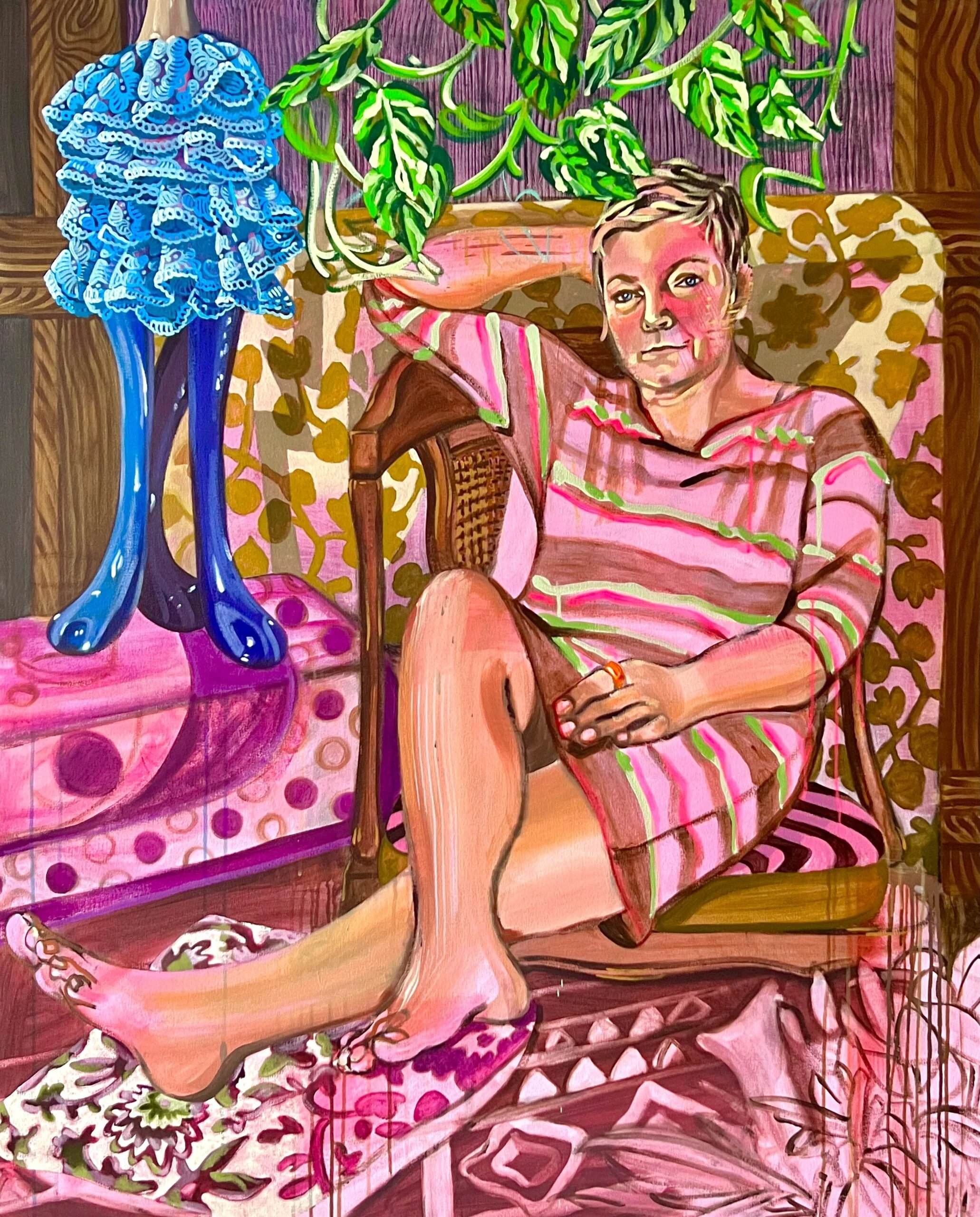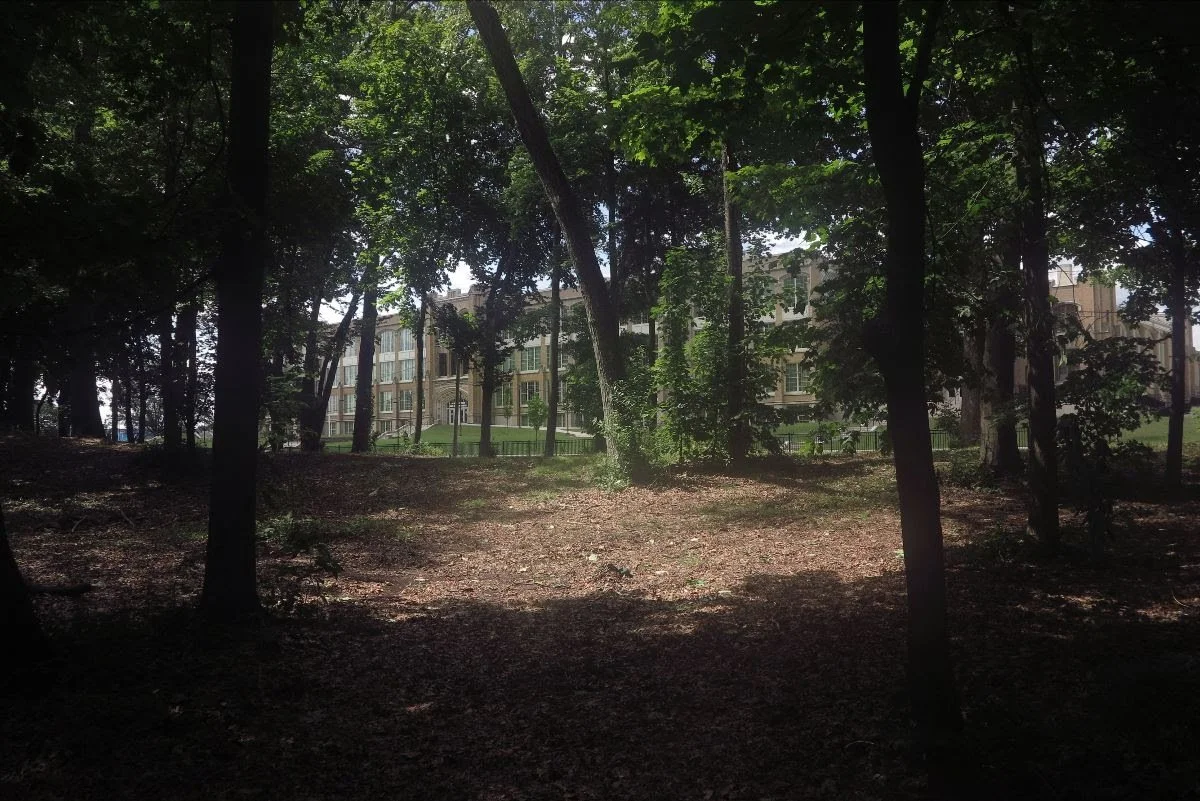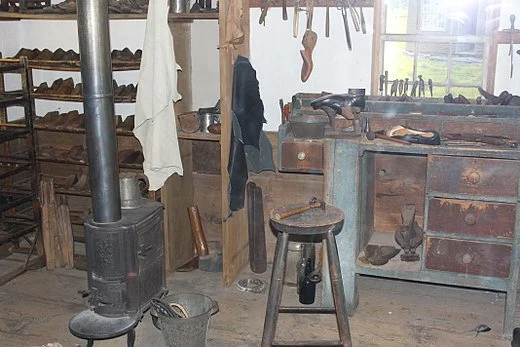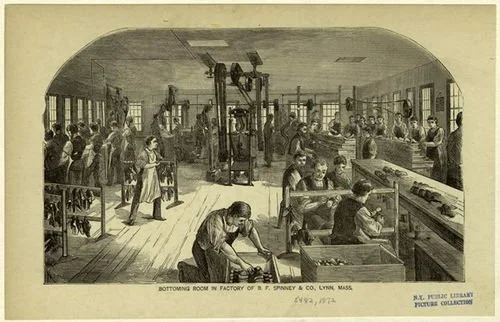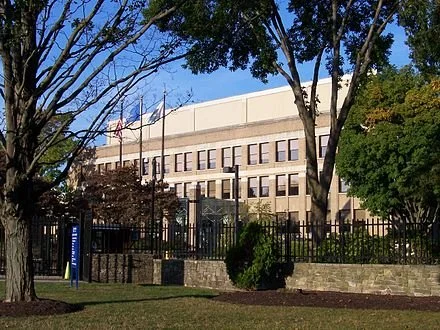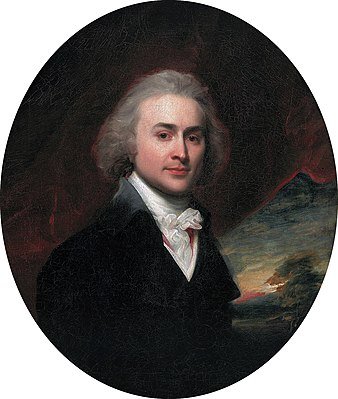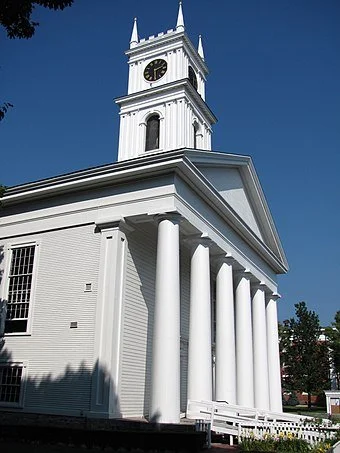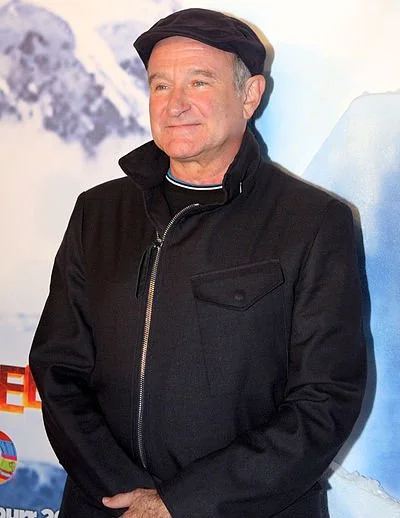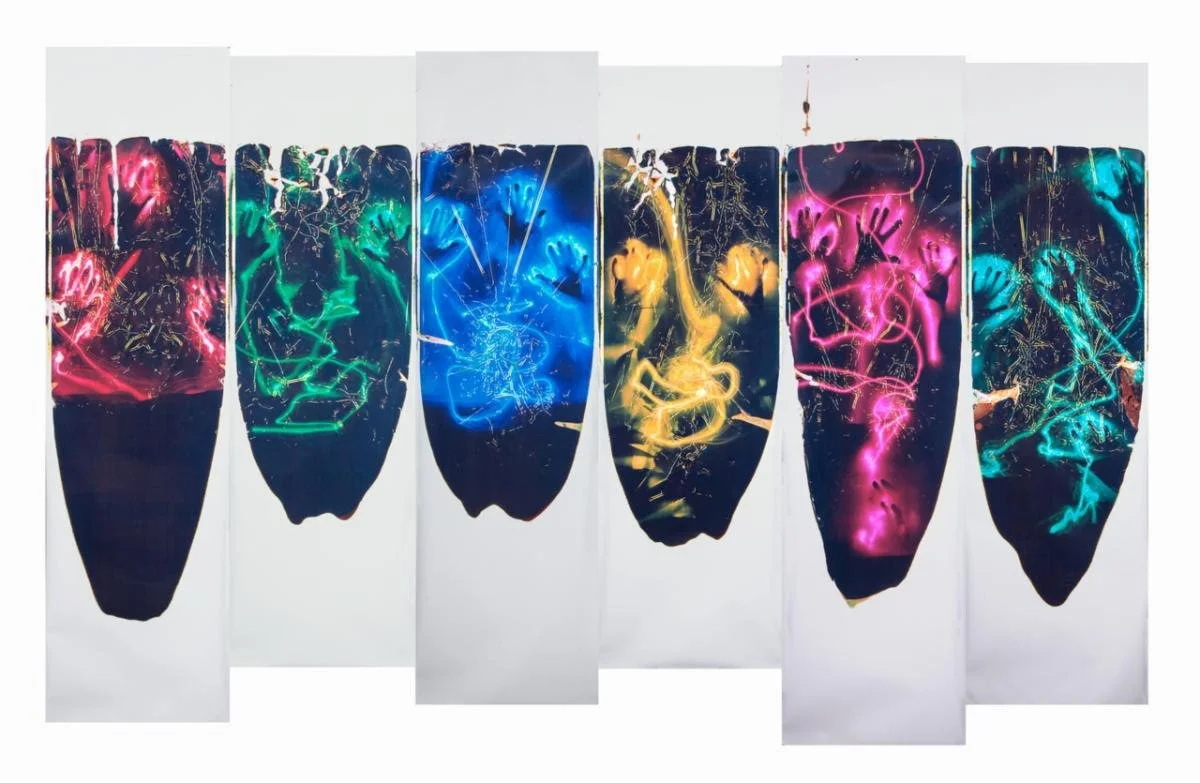
Providing access to ‘blue data’
Edited from a New England Council report:
“MITRE is launching the BlueNERVE Network to provide secure, real-time access to maritime data and testing resources for organizations involved in maritime technology research. The initiative is supported by a $2.2 million grant from the Massachusetts Technology Collaborative and the administration of Gov. Maura Healey.
{Mitre is a not-for-profit organization with dual headquarters in Bedford, Mass., and McLean, Va. It manages federally funded research and development centers supporting various U.S. government agencies in aviation, defense, health-care, homeland security and cybersecurity, among others.}
“The network aims to facilitate the growth of the global Blue Economy by offering researchers and entrepreneurs access to ‘blue data’ to drive new discoveries, innovations and companies. BlueNERVE will connect various institutions, including universities and research centers, allowing researchers to conduct experiments and access real-time data remotely. MITRE’s BlueTech Lab, in Bedford, Mass., will serve as the central hub for the network.
“‘The oceans are an invaluable resource tied to many of the nation’s biggest challenges, including national security, climate resilience, and economic growth,’ said Douglas Robbins, vice president of engineering and prototyping at MITRE Labs. ‘This project will foster an attractive innovation ecosystem for BlueTech startup companies, providing a first-in-the-nation data sharing capability that will maximize advantages for the region and grow the BlueTech workforce to meet the needs of the New Blue Economy.”’
Art inspired by a bygone industry
Untitled photo by Tsar Fedorsky, from "The Quarry Project" series (archival inkjet printed on washi paper) in the Cape Ann Museum’s group show “QuarryArt,’’ through July 30
— Courtesy of the artist.
The museum explains:
{The} “exhibition … brings together the work of nine artists in collaboration with freelance photographer and Boston Globe reporter David Arnold. The nine artists, Tsar Fedorsky, Albert Glazier, Paul Cary Goldberg, Skip Montello, Olivia Parker, Martin Ray, Katherine Richmond, Steve Rosenthal and Constance Vallis photographed area {granite} quarries to ‘highlight economic importance of quarries centuries ago."‘
Panorama of the former quarry at Halibut Point State Park in Gloucester
— Photo by Ymblanter
Lessons from one-room schoolhouses
Outside a one-room schoolhouse in Norwich, Vt., about 1937
Back to School: Lessons from Norwich’s One-Room Schoolhouses is a new documentary film that explores the effort to preserve two remaining schoolhouses in Norwich, Vt.
Hear from the last generation of students who went to school there, and find out how the community uses these historic buildings today.
Back to School is part of Historic New England’s Everyone’s History series.
Still 'a great lake' to us
(Mt.) Mansfield from Lake Champlain, by Matt Brown, at Matt Brown Fine Art, Lyme, N.H. Champlain was briefly officially listed as one of the Great Lakes.
On the Lyme Green
Smarts Mountain looms over Reservoir Pond, in Lyme.
—Photo by Ken Gallager
Phyllis Bennis: A tale of two tragedies at sea
Via OtherWords.org
Recent weeks saw two terrible tragedies at sea.
In one, five explorers died when the Titan submersible imploded in the North Atlantic. In the other, over 600 refugees — most of them women and children — drowned in the Mediterranean when their fishing trawler sank.
Both voyages ended in a heartbreaking loss of life. But there were vast differences between the two tragedies in media attention and government response, highlighting just how unequal our world has become.
On board the Titan were two billionaires and one of their sons, along with a CEO and research director of companies tied to undersea adventure tourism. They were headed for the wreckage of the Titanic, which sank 111 years ago.
When the Titan lost contact with its mother ship less than two hours after descent began, calls for assistance immediately went out. Help came quickly from the U.S. and Canadian coast guards and navies, along with support from France and offers from other countries.
Sonar-equipped planes, undersea diving equipment, trained divers, and search ships of every variety steamed to the area. Meanwhile, breathless coverage of the tragedy stayed on the front pages around the world as TV news counted down the hours of oxygen left in the small craft.
The rescue cost is unknown, but initial estimates are around $100 million — a cost that will be footed by taxpayers.
Compare this to the story of the Andriana, which sank off the coast of Greece just two days after the Titan went down. The Andriana was thought to be carrying over 700 people, of whom just 104 survived. No women or children were among the survivors.
The limited news coverage of the Andriana included nothing like the up-close-and-personal human stories of the lives and dreams of the five men aboard the Titan. Except for a few, we don’t even know their names.
They were desperate migrants, many of them refugees, from countries wracked by war, poverty, climate disasters and human-rights violations — including Afghanistan, Syria, Palestine, Pakistan and Egypt. They were sailing from Libya in a decrepit fishing boat, hoping to make it to Europe alive.
The Greek coast guard quickly realized that the ship was in trouble, but didn’t try to rescue the desperate passengers on the deck. Greek authorities made assertions — vehemently disputed by ship captains nearby, migrant advocates, and the passengers themselves — that the ship had turned down offers of assistance.
The ship had been in distress almost two days before it sank, but help didn’t come until it was too late. How many might have been rescued with one-tenth the resources that were rushed to save the very, very people on the Titan?
Europe’s racist approach to migration starts and ends with preventing African, Asian and Arab migrants from entering European territory. But it’s not just a European problem.
Indeed, the continent’s policies on migrants bear a tragic — indeed criminal — similarity to our own in the United States. As thousands of desperate refugees and migrants have died crossing the Mediterranean, thousands more from Central America, the Caribbean, and beyond have died trying to cross the desert along the U.S.-Mexico border.
How many might have been saved if immigration policy were grounded in keeping migrants safe, rather than keeping them out?
The rescue effort mounted for those lost on the Titan shows what’s possible when those in danger are treated like they matter. U.S. officials should work just as hard to rescue poor and endangered migrants as they do the billionaires — their lives matter just as much.
Phyllis Bennis directs the New Internationalism Project at the Institute for Policy Studies.
#Titan
#Andrina
#migrants
David Warsh: AI firms and news publishers are dickering over revenue sharing
Baker Library at Dartmouth College
Dartmouth College’s Kiewit Computation Center, cutting edge when it was built, in 1966, and torn down as outdated, in 2018
From Cantor’s Paradise:
“The Dartmouth (College) Summer Research Project on Artificial Intelligence was a summer workshop widely considered to be the founding moment of artificial intelligence as a field of research. Held for eight weeks in Hanover, New Hampshire in 1956 the conference gathered 20 of the brightest minds in computer- and cognitive science for a workshop dedicated to the conjecture:
"..that every aspect of learning or any other feature of intelligence can in principle be so precisely described that a machine can be made to simulate it. An attempt will be made to find how to make machines use language, form abstractions and concepts, solve kinds of problems now reserved for humans, and improve themselves. We think that a significant advance can be made in one or more of these problems if a carefully selected group of scientists work on it together for a summer."
-- A Proposal for the Dartmouth Summer Research Project on Artificial Intelligence (McCarthy et al., 1955)
Somerville, Mass.
Why the speed with which artificial intelligence technologies have been sprung on the world? The answer may have something to do with the model that AI companies have in mind for the most potentially lucrative among their new businesses. Once again it seems to have to do mostly with advertising.
As a result, the newspaper business, broadly defined to include data-base/software businesses such Bloomberg, Reuters and Adobe, is taking stock of itself and its prospects as never before. Readers are learning about the capabilities and limitations of generative artificial intelligence engines, which can produce on demand Wiki-like articles containing detailed but not necessarily dependable information. In the bargain, we may even learn something important about the systems of industrial standards that govern much of our lives.
Those implications emerged from a Financial Times story other week that Google, Microsoft, Adobe and several other AI developers have been meeting with news company executives in recent months to discuss copyright issues involving their AI products, such as search engines, chatbots and image generators, according to several people familiar with the talks.
FT sources said that publishers including News Corp, Axel Springer, The New York Times, The Financial Times and The Guardian have each been in discussions with at least one major tech company. Negotiations remain in their early stages, those involved in them told the FT. Details remain hazy: annual subscriptions ranging from $5 million to $20 million have been discussed, one publisher said.
This much is already clear: Media companies are seeking to avoid compounding the mistakes that allowed Google and Facebook to take over from print, broadcast and cable concerns the lion’s share of the advertising business, in a wave of disruption that began around the start of the 21st Century.
A major problem involves avoiding further concentration among media goliaths. At stake is the privilege of decentralized newspapers, competing among themselves, to remain arbiters of democracies’ provisional truth, the best that can be arrived at quickly, day after day.
Mathais Döpfner. whose Berlin-based media company owns the German tabloid Bild and the broadsheet Die Welt, told FT reporters that an annual agreement for unlimited use of a media company’s content would be a “second best option,” because small regional or local news outlets would find it harder to benefit under such terms. “We need an industry-wide solution,” Döpfner said. “We have to work together on this.”
The background against which such discussions take place is copyright law. Obscured is the role frequently played by privately negotiated industry standards.
Behind the scenes talks will continue. But the changing nature of advertising-based search is a breaking story. Newspapers remain free to take their case to the public, in hopes of government intervention of unspecified sorts.
The adage applies about lessons learned from experience: fool me once, shame on you; fool me twice, shame on me.
David Warsh, a veteran columnist and an economic historian, is proprietor of Somerville-based economicprincipals.com, where this column originated.
#David Warsh
#artificial intelligence
Just get us there
“‘We don’t want rapists or sexual deviants driving cabs,’ an official of the City of Boston Cab Association was once quoted as declaring. However, most Bostonians would gladly travel to their destinations with a sexual deviant if only said driver could be counted upon to know the way.’’
— Nathan Cobb, in “Taxing Toward a Fun City,’’ from CITYSIDE/COUNTRYSIDE, by Mr. Cobb and John N. Cole (1980)
Exploring intimacy
“Sam in the Studio,’’ by Barbara Ishikura, in the show “Frippery, Finery, Frills: Works in Conversation,’’ with Sam Fields at the Southern Vermont Arts Center, Manchester, Vt., July 1-Sept. 24. Both artists are Massachusetts-based.
The gallery says:
“Drawing from historicized images of women in art, fiction, and our collective imagination, Barbara Ishikura and Sam Fields explore intimacy through imagery, process, and materials.
“Sam Fields is a multimedia artist who creates intricate, layered sculptures. In her work, crocheted ruffle upon ruffle, beads, sequins, lace, and embroidery elevate what has been traditionally considered low brow in western society.
“In her paintings, Barbara Ishikura depicts women who display their unabashed sexuality and crass pleasures. Their presence within beautiful and refined interior spaces creates tension.
“Using a visual language associated with the feminine and traditionally viewed as unsophisticated, their work celebrates and reclaims an opulence of ornament, a particular aesthetic of glorious beauty. These artists are giving form and color to domestic objects and intimate spaces in order to expand what women’s sexuality and being can look, feel, smell, sound, and taste like.’’
#Barbara Ishikura
#Sam Fields
History of India in New England; Llewellyn King on what holds back that huge nation
Sri Lakshmi {Hindu} Temple, in Ashland, Mass.
— Photo by Tshiv
From “The Indian Presence in New England: People and Ideas” . Hit this link to read the whole article.
“There were some exceptions to this general atmosphere of non-acceptance {of Indians in America}. In general, the intellectuals of the Northeast were not active participants in such overt racialized discourse. Jane Jensen states that New England intellectuals developed a deep interest in Indian religions in the early 19th century, at about the time the New England-India trade developed. She describes how Boston society became interested in Indian literature and in Indian religions, especially Hinduism, Buddhism and the Brahmo Samaj movement. Intellectuals at universities such as Harvard began to cultivate an active scholarship and also initiated a nascent Indian art collection at the Boston Museum of Fine Arts. The theosophical writing of Ralph Waldo Emerson and Henry David Thoreau, as well as Walt Whitman’s poems (such as “Passage to India” and “Leaves of Grass”), are reflective of this trend. These earlier writings of the Transcendentalists, on the “life of the spirit” (developed on the basis of an earlier encounters with Hinduism), prepared the ground for Vivekananda and his message.’’
Indian Prime Minister Narendra Modi
By Llewellyn King
WEST WARWICK, R.I.
By the diplomatic hoopla in Washington that greeted Indian Prime Minister Narendra Modi last week, it would seem that intrepid U.S. explorers had just discovered India and were celebrating him in the way Britain treated tribal leaders in the 19th Century: Show them the big time. Then co-opt them to vow allegiance.
In this century, the U.S. equivalent of the big time is a state visit and endless professions of friendship. Experience says Modi won’t bite.
Historically, India has been reluctant to accept the embrace of the West. Although it is democratic, capitalist and has the largest diaspora, India’s affections have been hard to capture.
Since independence from Britain in 1947, India has sought global status by standing aloof and leaning toward countries and regimes that are anathema to the West. Its first prime minister, Jawaharlal Nehru, fostered the concept of a third force in the world: a constellation of unaligned nations with India at the center.
It showed a perverse affection for the Soviet Union — which was hardly nonaligned — and didn’t reflect the values of India: free movement of people, free press, capitalism and democracy.
Years ago, a retired executive editor of the Times of India, whom I knew socially, told me, “There are maybe a million Indians living in the United States and only a handful who live in the Soviet Union, but our leaders have always leaned toward them. It is a puzzle.”
There are now 4.2 million Indians living in the United States.
At the same time, Indians migrated across the world and made inroads into professions from Canada to New Zealand. In Britain, they are prominent in politics and the prime minister, Rishi Sunak, is of Indian descent.
In the United States, executives of Indian descent run some of the largest tech companies, including IBM, Google and Microsoft.
Indians are a huge force in English literature. Every year Indian writers feature on the prize lists for best new English novels. Whereas the computers most of us use may have been made in China, much of the software was written in India.
Indian words abound in English: Pajamas, ketchup, bungalow, jungle, avatar, verandah, juggernaut and cot are just a few.
The effect of Indian culture on the world is evident from curry and rice to polo to yoga.
Yet, India remains a distant shore, elusive and obvious at the same time. A country of enormous talent that lags economically. It now has the fifth-largest economy in the world. With 1.4 billion people, many of whom of obvious ability, the question must be, why does it still have crushing poverty?
Andres Carvallo, professor of innovation at Texas State University, told the “Digital 360” webinar, for which I am a regular panelist, he thought it was partly because India lagged in essential electricity production, pointing out that China has four times the electricity output of India.
But is this symptom or cause? I have been puzzling over why India doesn’t do better for decades. It seems to me that the causes are multiple, but some can be laid at Britain’s feet — not because the British were occupiers in India but because of some of the good things they left there that have perversely remained time-warped.
One of India’s ambassadors to Washington told me with pride that every occupier had enriched India and left something of value behind, from Alexander the Great to the Moguls and, of course, Britain and the Raj.
But the Brits also left behind a sluggish bureaucracy to the point of sclerosis and a legal system that is independent but takes an eternity to reach a decision. Additionally, some of the ideas prevalent in British Labor Party thinking — and long since abandoned — took hold in India and have been extremely detrimental. These included protectionism, a state’s role in the economy, and a fear of competition from abroad.
I believe that protectionism is the greatest evil. It discouraged competition, innovation and creativity. It inadvertently allowed a few families to concentrate too much wealth and economic power and to work to protect that.
India is more open now, but it needs to be vigilant against the evils that go with protectionism, which is still part of its DNA.
At one time, you could buy a brand-new Indian made-car — Fiat or Morris design — which was 30 years out of date. No need to innovate; just make the same car year after year.
If it liberalizes its economy, India may one day outpace China. Meantime, do luxuriate in those Indian words that have so spiced up English.
Llewellyn King is executive producer and host of White House Chronicle, on PBS. He’s based in Rhode Island and Washington, D.C.
On Twitter: @llewellynking2
Watch or Listen to White House Chronicle
Streaming: All episodes are free to watch on Vimeo [link]
On television: Visit our website [link] to find your location carrying station.
SiriusXM radio: Listen to White House Chronicle on P.O.T.U.S., Channel 124: Saturday at 8 a.m. and 6 p.m. ET; and Sunday at 4 p.m. and 11 p.m. ET.
#India
#White House Chronicle
Maybe don’t go any further
Photo by Massachusetts-based artist Chantal Zakari, in her show “Chantal Zakari: New Works,’’ at Kingston Gallery, Boston, Aug. 30-Oct. 1
She says:
“I am inspired by social phenomena and position myself in relation to the public. I freely combine research methodologies and artistic strategies from various disciplines such as photography, documentary, graphic design, performance, storytelling, installation, and social interventions. Text and language are an inherent part of my work; interviews, personal narrative, found text, all have the potential to contextualize the imagery. My work is project based. As I explore projects over the span of several years, the work can transform into exhibitions, installations, publications, performances and street happenings. Designing and redesigning the work into different contexts brings me a greater understanding of the ideas, and makes it more accessible to different groups of audiences.”
Lovely fatalism
“Amen, so be it” (oil on canvas), by Boston-based artist Jennifer Jean Okumura, at Project B Gallery, Framingham, Mass., through July 10.
We still make 'em
New Balance running shoes
Early 19th Century shoemaking shop displayed at the Maine State Museum, in Augusta
By the mid to to late 19th Century, the shoemaking industry had migrated to the factory and was increasingly mechanized. Here’s the bottoming room of the B. F. Spinney & Co. factory, in Lynn, Mass., in 1872
The shoe industry was once huge in New England. It was concentrated in eastern Massachusetts, particularly in Lynn and Brockton, but Maine and New Hampshire had shoemaking centers, too. And some of the companies that served the industry were big, too— most notably United Shoe Machinery Corp., based for decades in its Art-Deco skyscraper on Federal Street in downtown Boston. But by the mid-20th Century, much of the industry had moved south, in search of cheaper labor. But a few shoe companies remain in the region.
The following is edited from a New England Council report:
“New Balance, the Boston-based footwear maker, opened manufacturing facilities in Skowhegan, Maine, and Londonderry, N.H., as part of its efforts to expand U.S. manufacturing capacity. The company aims to enhance its American supply network through innovation, automation] and robotics.
“With the $65 million Skowhegan expansion, New Balance will add a 120,000-square-foot single-story addition to the existing facility, doubling production capabilities and creating 200 new jobs. Additionally, the Londonderry facility would cover 102,418 square feet and includes office and manufacturing space, seven loading docks, and LED lighting. New Balance expects to hire 250 employees initially and up to 450 upon completion of the project.
“‘ New Balance has always been strongly committed to the communities where our associates live and work,’ said Raye Wentworth, director of domestic manufacturing at the company. ‘We’re thrilled to be able to support this important opportunity to add quality, affordable education and child-care resources for local families.”
An ad for the long-gone, high-end Brockton, Mass.-based shoemaker the Geo E. Keith Co., whose famous trade name was Walk-Over
#New Balance
#shoemaking
Chris Powell: Conn. junket in Paris? Another wrongful conviction
Advertisement for Sikorsky S-42 Clipper flying boat from 1937.
Sikorsky Aircraft , based in Stratford, Conn., was established by aviation pioneer Igor Sikorsky in 1923 and was among the first companies to manufacture helicopters for civilian and military use. Its UH-60 Black Hawk below.
Headquarters of Pratt & Whitney, the aerospace company, in East Hartford, Conn.
MANCHESTER, Conn.
With about 34,000 of its residents employed in the aerospace industry, Connecticut had good reason to be represented at the Paris Air Show this past week, so Gov. Ned Lamont was there with a delegation of state officials and business leaders.
“Our goal," the governor says, "is to get more products that are made in Connecticut out into the world, and to get more of the world doing business in Connecticut.”
Some time may pass before Connecticut learns whether the excursion was a serious attempt at business development or just a junket.
Besides the concentration of aerospace businesses here, the state's advantages to the industry are said to include its strategic location between New York and Boston, the great life in its suburbs, its skilled manufacturing workforce, and the quality of its products.
Yet business leaders from around the world who come to the air show more for business than junketing may be prepared to inquire beyond the conventional wisdom.
They might ask about the recent inability of Connecticut manufacturers to find qualified people and the growing share of the workforce emerging uneducated from the state's schools and suited only for menial work.
They might ask about the state's high taxes and particularly the recent extension of its 10 percent surcharge on the corporation income tax.
They also might ask about the state's high housing costs and severe shortage of housing for working people. If a foreign company wanted to open a facility in Connecticut with 200 or more employees, exactly where could enough housing be found for them near the new company? Even if the new company was willing to build housing for its employees, would any municipality welcome it or just obstruct it with zoning?
If they face such serious questions in Paris, Connecticut's delegation well might prefer to linger at the Eiffel Tower, the Louvre, or any croissant shop.
xxx
Connecticut has another catastrophic and likely expensive wrongful conviction case -- that of Adam Carmon, who served 28 years in prison on a charge of firing a dozen bullets into an apartment in New Haven in 1994, killing a baby and paralyzing her grandmother.
In November Superior Court Judge Jon Alander reversed Carmon's convictions and ordered a new trial. Last week the New Haven prosecutor's office dropped the charges, having concluded that the evidence for them won't stand up a second time -- eyewitness identification that was shaky and ballistics evidence that has been repudiated. Additionally, the judge concluded that the prosecution withheld from the defense evidence suggesting that two purported drug dealers could have done the shooting and that the police failed to pursue other suspects, including a man who confessed and then recanted.
No motive for Carmon to commit the crime was ever offered.
So Judge Alander has dismissed the case, telling Carmon, "The criminal- justice system failed you."
For the 28 years taken from him, Carmon is entitled to file a damage claim against the state and to sue the agencies that investigated and prosecuted him. He probably has at least $5 million coming to him, though few people would exchange 28 years for any amount.
The criminal-justice system also seems to have failed a disturbing number of others in recent years, especially in the New Haven area. Critics point to a dozen other overturned convictions involving complaints of police and prosecutor misconduct from the 1980s through the early 2000s. They want a federal investigation.
Investigation is very much warranted but not by the federal government, now that the U.S. Justice Department and Federal Bureau of Investigation have been so corrupted politically.
No, the investigation here should be conducted by Connecticut's own authorities, and particularly by the General Assembly, which has broad authority over the operations of state government, including criminal justice, but seldom investigates or even audits anything, though the other day it asked state agencies to study the urgent matter of adding "non-binary" to the gender identification sections of their license and application forms.
Chris Powell has written about Connecticut government and politics for many years. (CPowell@cox.net)
#aerospace
What to do?
“The Great Mystery” (acrylic on canvas), by Canadian artist Kent Monkman, in his show “Kent Monkman: The Great Mystery,’’ at the Hood Museum of Art, at Dartmouth College, Hanover, N.H. , through Dec. 16.
The exhibition features a new body of paintings by Monkman, a member of the Cree nation —including two commissioned works for the Hood Museum of Art's permanent collections.
FYI: Dartmouth began as a school for Native Americans in Connecticut in 1754.
But quakes do happen
An 18th-Century woodcut taken from a religious tract showing the effects in Boston of the Cape Ann Earthquake, on Nov. 18, 1755. The earthquake’s epicenter was just off Cape Ann and is believed to have been between 6.0 and 6.3 on the Richter scale, making it a powerful quake. It did major damage on Cape Ann and in Boston and remains the largest measured earthquake in Massachusetts so far.
“When Benjamin Franklin invented the lightning-rod {in 1749} the clergy, both in England and America, …. condemned it as an impious attempt to defeat the will of God. For, as all right-thinking people were aware, lightning is sent by God to punish impiety or some other grave sin—the virtuous are never struck by lightning. Therefore if God wants to strike any one, Benjamin Franklin [and his lightning-rod] ought not to defeat His design; indeed, to do so is helping criminals to escape. But God was equal to the occasion, if we are to believe the eminent Dr. Price, one of the leading divines of Boston. Lightning having been rendered ineffectual by the 'iron points invented by the sagacious Dr. Franklin,' Massachusetts was shaken by earthquakes, which Dr. Price perceived to be due to God's wrath at the 'iron points.' In a sermon on the subject he said, 'In Boston are more erected than elsewhere in New England, and Boston seems to be more dreadfully shaken. Oh! there is no getting out of the mighty hand of God.' Apparently, however, Providence gave up all hope of curing Boston of its wickedness, for, though lightning-rods became more and more common, earthquakes in Massachusetts have remained rare.”
— Bertrand Arthur William Russell, 3rd Earl Russell, (1872-1970) was a British mathematician, philosopher, logician and public intellectual.
#Cape Ann Earthquake
Don’t be a slob, become president
John Quincy Adams as a young man
“You come into life with advantages which will disgrace you if your success is mediocre. And if you do not rise to the head not only of your own profession, but of your country, it will be owing to your own laziness, slovenliness and obstinacy.“You come into life with advantages which will disgrace you if your success is mediocre. And if you do not rise to the head not only of your own profession, but of your country, it will be owing to your own laziness, slovenliness and obstinacy.’’
— Then Vice President (and the next President) John Adams (1735-1826) to his son John Quincy Adams (1767-1848), then a teenager, in 1794. John Quincy Adams managed to become secretary of state, president and congressman, in which job he led the opposition to slavery. Both Adamses are buried at the United First Parish Church, in Quincy, Mass.
‘When I feel a little shiver’
“Throw Roses in the Rain” (mixed media diptych with acrylics on panel), by Deborah T. Colter, at Atelier Newport, though July 22.
She says:
“My work currently speaks to my infatuation with process and exploration. Painting allows me to discover places that feel both familiar and unknown. Often I feel the work arrives out of nowhere as if sent from a place beyond my knowledge. I deeply trust in the messy process of creating, with all its inherent bumps and wrinkles, which helps me understand my need to continue on this creative path.
“When a piece begins to coalesce and I feel a little shiver run down my spine, it is then that I understand the painting has taken on a life of its own.’’
She lives on Martha’s Vineyard
The Old Whaling Church , in the Edgartown Village Historic District, on the eastern side of Martha’s Vineyard. Built with whaling captains’ money in 1843, this stately landmark is considered one of the finest examples of Greek Revival architecture in the country.. The second quarter of the 19th Century was the heyday of the whaling industry, which was centered in southern New England.
# Deborah T. Colter
#Atelier Newport
Sarah Boden: Dementia can cause financial disasters
Comedian and movie star Robin Williams (1951-2014) in 2011). His widow said he was diagnosed on autopsy with Lewy body dementia.
This article is from a partnership that includes WESA, NPR and KFF Health News.
NEW HAVEN, Conn.
Angela Reynolds knew that her mother’s memory was slipping, but she didn’t realize how bad things had gotten until she started to untangle her mom’s finances: unpaid bills, unusual cash withdrawals, and the discovery that, oddly, the mortgage on the family home had been refinanced at a higher interest rate.Looking back, Reynolds realizes her mother was in the early stages of Alzheimer’s disease: “By the time we caught on, it was too late.”
Reynolds and her mother are among a large group of Americans grappling with the financial consequences of cognitive decline.
A growing body of research shows money problems are a possible warning sign — rather than only a product — of certain neurological disorders. This includes a 2020 study from Johns Hopkins University of more than 81,000 Medicare beneficiaries that found people with Alzheimer’s and related dementias became more likely to miss bill payments up to six years before a formal diagnosis.
The reach of these conditions is enormous. One recent study found nearly 10% of people over age 65 have dementia; more than twice as many are living with mild cognitive impairment..
One weekday in the spring of 2018, Reynolds sat next to her 77-year-old mother, Jonnie Lewis-Thorpe, in a courtroom in downtown New Haven. She listened in discomfort as strangers revealed intimate details of their own finances in a room full of people waiting their turn to come before the judge.
Then it hit her: “Wait a second. We’re going to have to go up there, and someone’s going to be listening to us.”
That’s because the family home was in foreclosure. The daughter hoped that if she explained to the judge that her mother had Alzheimer’s disease, which had caused a series of financial missteps, she could stop the seizure of the property.
Reynolds can’t pinpoint when Alzheimer’s crept into her mother’s life. A widow, Lewis-Thorpe had lived alone for several years and had made arrangements for her aging, including naming Reynolds her power-of-attorney agent. But Reynolds lived a 450-mile drive away from New Haven, in Pittsburgh, and wasn’t there to see her mom’s incremental decline.
It wasn’t until Reynolds began reviewing her mother’s bank statements that she realized Lewis-Thorpe — once a hospital administrator — had long been in the grip of the disease.
Financial problems are a common reason family members bring their loved ones to the office of Robin Hilsabeck, a neuropsychologist at the University of Texas at Austin Dell Medical School who specializes in cognitive issues.
“The brain is really a network, and there are certain parts of the brain that are more involved with certain functions,” said Hilsabeck. “You can have a failure in something like financial abilities for lots of reasons caused by different parts of the brain.”
Some of the reasons are due to normal aging, as Reynolds had assumed about her mother. But when a person’s cognition begins to decline, the problems can grow exponentially.
Dementia’s Causes and Ruthless Impacts
Dementia is a syndrome involving the loss of cognitive abilities: The cause can be one of several neurological illnesses, such as Alzheimer’s or Parkinson’s, or brain damage from a stroke or head injury.
In most cases, an older adult’s dementia is progressive. The first signs are often memory slips and changes in high-level cognitive skills related to organization, impulse control, and the ability to plan — all critical for money management. And because the causes of dementia vary, so do the financial woes it can create, said Hilsabeck.
For example, with Alzheimer’s comes a progressive shrinking of the hippocampus. That’s the catalyst for memory loss that, early in the course of the disease, can cause a person to forget to pay their bills.
Lewy body dementia is marked by fluctuating cognition: A person veers from very sharp to extremely confused, often within short passages of time. Those with frontotemporal dementia can struggle with impulse control and problem-solving, which can lead to large, spontaneous purchases.
And people with vascular dementia often run into issues with planning, processing, and judgment, making them easier to defraud. “They answer the phone, and they talk to the scammers,” said Hilsabeck. “The alarm doesn’t go off in their head that this doesn’t make sense.”
Jonnie Lewis-Thorpe, a widow who now has Alzheimer’s disease, had made arrangements for her aging, including naming daughter Angela Reynolds as her power-of-attorney agent. But Reynolds lived 450 miles away and wasn’t there to see her mom’s incremental decline.
For many people older than 65, mild cognitive impairment, or MCI, can be a precursor to dementia. But even people with MCI who don’t develop dementia are vulnerable.
“Financial decision-making is very challenging cognitively,” said Jason Karlawish, a specialist in geriatrics and memory care at the University of Pennsylvania’s Penn Memory Center. “If you have even mild cognitive impairment, you can make mistakes with finances, even though you’re otherwise doing generally OK in your daily life.”
Some mistakes are irreversible. Despite Reynolds’ best efforts on behalf of her mother, the bank foreclosed on the family home in the fall of 2018.
Property records show that Lewis-Thorpe and her husband bought the two-bedroom Cape Cod for $20,000 in 1966. Theirs was one of the first Black families in their New Haven neighborhood. Lewis-Thorpe had planned to pass this piece of generational wealth on to her daughters.
Instead, U.S. Bank now owns the property. A 2021 tax assessment lists its value as $203,900.
Financial Protections Slow to Come
Though she can’t prove it, Reynolds suspects that someone had been financially exploiting her mom. At the same time, she feels guilty for what happened to Lewis-Thorpe, who now lives with her: “There’s always that part of me that’s going to say, ‘At what point did it turn, where I could have had a different outcome?'”
Karlawish often sees patients who are navigating financial disasters. What he doesn’t see are changes in banking practices or regulations that would mitigate the risks that come with aging and dementia.
“A thoughtful country would begin to say we’ve got to come up with the regulatory structures and business models that can work for all,” he said, “not just for the 30-year-old.”
But the risk-averse financial industry is hesitant to act — partly out of fear of getting sued by clients.
2018’s Senior Safe Act , the most recent major federal legislation to address elder wealth management, attempts to address this reticence. It gives immunity to financial institutions in civil and administrative proceedings stemming from employees reporting possible exploitation of a senior — provided the bank or investment firm has trained its staff to identify exploitative activity.
It’s a lackluster law, said Naomi Karp, an expert on aging and elder finances who spent eight years as a senior analyst at the Consumer Financial Protection Bureau’s Office for Older Americans. That’s because the act makes training staff optional, and it lacks government oversight. “There’s no federal agency that’s charged with covering it or setting standards for what that training has to look like,” Karp said. “There’s nothing in the statute about that.”
One corner of the financial industry that has made modest progress is the brokerage sector, which concerns the buying and selling of securities, such as stocks and bonds. Since 2018, the Financial Industry Regulatory Authority — a nongovernmental organization that writes and enforces rules for brokerage firms — has required agents to make a reasonable effort to get clients to name a “trusted contact.”
A trusted contact is similar to the emergency contact health care providers request. They’re notified by a financial institution of concerning activity on a client’s account, then receive a basic explanation of the situation. Ron Long, a former head of Aging Client Services at Wells Fargo, gave the hypothetical of someone whose banking activity suddenly shows regular, unusual transfers to someone in Belarus. A trusted emergency contact could then be notified of that concerning activity.
But the trusted contact has no authority. The hope is that, once notified, the named relative or friend will talk to the account holder and prevent further harm. It’s a start, but a small one. The low-stakes effort is limited to the brokerage side of operations at Wells Fargo and most other large institutions. The same protection is not extended to clients’ credit card, checking, or savings accounts.
Financial Industry Reluctant to Help
When she was at the Consumer Financial Protection Bureau, Karp and her colleagues put out a set of recommendations for companies to better protect the wealth of seniors. The 2016 report included proposals on employee training and changes to fraud detection systems to better detect warning signs, such as atypical ATM use and the addition of a new owner’s name to an existing checking account. “We would have meetings repeatedly with some of the largest banks, and they gave a lot of lip service to these issues,” Karp said. “Change is very, very slow.”
Karp has seen some smaller community banks and credit unions take proactive steps to protect older customers — such as instituting comprehensive staff training and improvements to fraud detection software. But there’s a hesitancy throughout the industry to act more decisively, which seems to stem in part from fears about liability, she said. Banks are concerned they might get sued — or at least lose business — if they intervene when no financial abuse has occurred, or a customer’s transactions were benign.
Policy solutions that address financial vulnerability also present logistical challenges. Expanding something as straightforward as use of trusted contacts isn’t like flipping a light switch, said Long, the former Wells Fargo executive: “You have to solve all the technology issues: Where do you house it? How do you house it? How do you engage the customer to even consider it?”
Still, a trusted contact might have alerted Reynolds much sooner that her mom was developing dementia and needed help.
“I fully believe that they noticed signs,” Reynolds said of her mother’s bank. “There are many withdrawals that came out of her account where we can’t account for the money. … Like, I can see the withdrawals. I can see the bills not getting paid. So where did the money go?”
Sarah Boden (@Sarah_Boden) is a WESA reporter.
#dementia
On deep background
“In the Beginning: My Cultural Heritage” (monoprint and chine colle), by Lowell, Mass.-based artist Jean Winslow in the group show “Expressions of Culture and Identity,’’ at the Brush Art Gallery and Studios, Lowell, through July 30.
The gallery says the show features the work of 23 artists from Massachusetts and New Hampshire who were invited to "explore their culture or personal identity through the visual arts." The theme aligns with a soon-to-be installed exhibit by the Lowell National Historical Park.
#Jean Winslow #Brush Art Gallery
‘Light, color and shadow'
“Crush & Pull with Hands & Penlights” (Polaroid color prints), by Hartford-based photographer Ellen Carey, in her show “Struck by Light,’’ at the New Britain (Conn.) Museum of American Art, July 20 to Jan. 28
The museum says:
“Since the early 1990s, artist Ellen Carey (b. 1952) has created experimental and abstract works that defy photographic conventions. Struck by Light represents the largest survey of Carey’s innovative photo-objects and lens-based artworks. Spanning 30 years of her prolific career, the exhibition includes examples of her Photography Degree Zero (1996–2023) practice of Polaroid 20 X 24 lens-based images—including Pulls and Rollbacks—as well as her Struck by Light (1992–2023) series of camera-less photograms—Dings and Shadows—inspired by the earliest examples of paper photography. Collectively, the works trace Carey’s enormous contributions to the field of photography through her pioneering explorations of light, color and shadow, and are drawn from the collections of the New Britain Museum of American Art and the artist.’’
Polaroid Land Camera Model 95, the first commercially available instant camera. It went on the market in 1948. The “Land’’ for Edwin Land, inventor of the camera and the founder of Polaroid Corp., in Cambridge, Mass.



